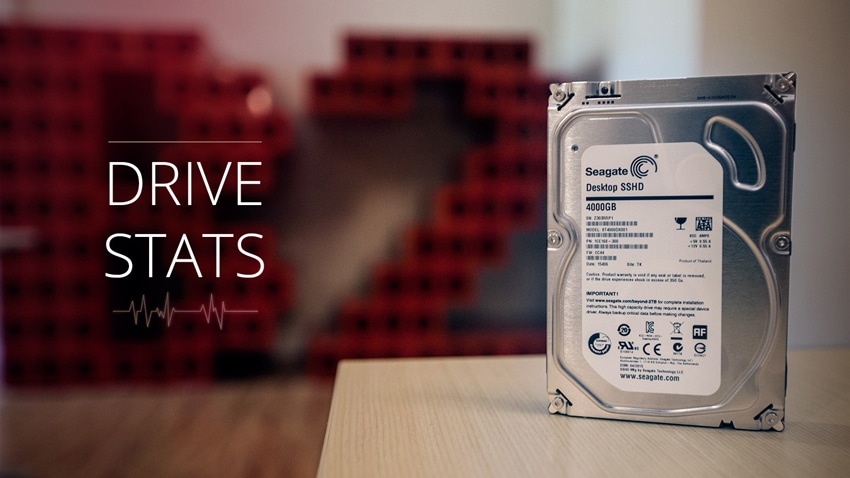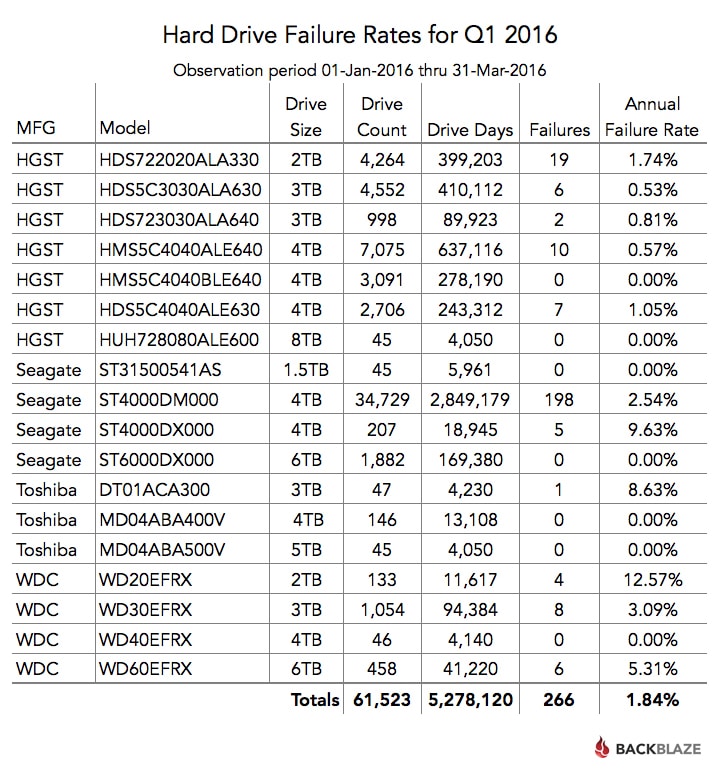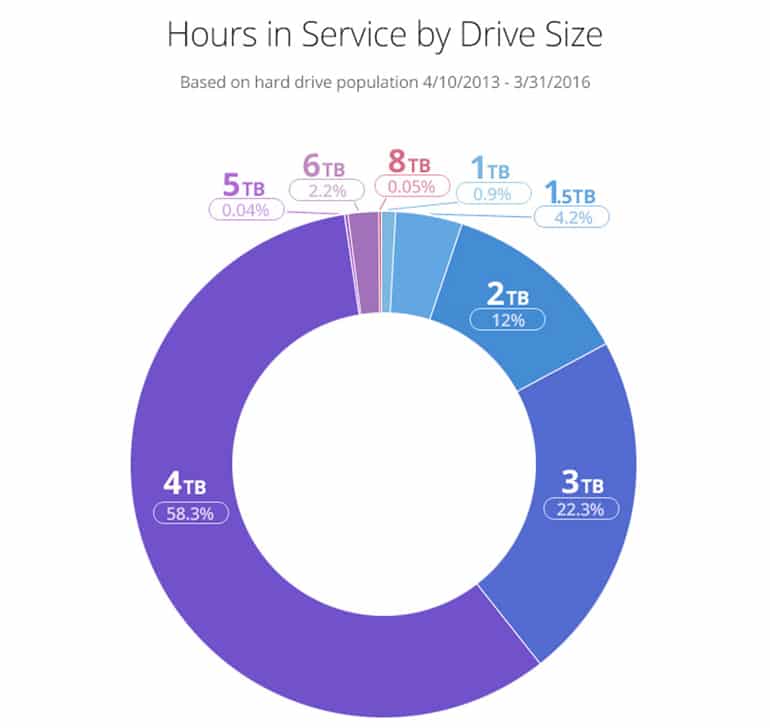
Today Backblaze released its latest hard drive reliability for the first quarter of 2016. This time around Backblaze evaluated over 60,000 drives (61,523 to be exact). All of the hard drives in Backblaze’s data center equaled to over one billion hours, nearly 42 million days or 114,155 years worth of spinning hard drives.
Since 2007 Backblaze has been offering an online backup service. For the backup service Backblaze uses storage pods that holds at least 45 HDDs (the newer pods hold 60 HDDs). They put 20 storage pods together to make a storage vault that can hold up to 1,200 HDDs. That’s a lot of hard drives. Backblaze using hard drives from primarily four main vendors: Seagate, WD, HGST, and Toshiba. The reason for choosing these companies comes from being able to buy the quantity needed for the price that enables Backblaze to offer customers the best deal. Backblaze also states that the reason most of the drives they use are Seagate and HGST is due to the availability of purchasing the quantity needed at the right price.
Looking at non-cumulative results of Q1 we can see that some drives had a zero percent failure rate while the Seagate ST4000DX000 had a failure rate as high as 9.63% and the WD Red 2TB had an even higher failure rate of 12.57%. While these numbers seem high there are a few things to keep in mind. First, failure in this study is defined as 1) The drive will not spin up or connect to the OS. 2) The drive will not sync, or stay synced, in a RAID Array. 3) The Smart Stats used show values above our thresholds. Second, these failures happened while running within Backblaze’s data center, which may not represent the best use case for the given drives. The percentages listed above actually only came from a handful of drives failing in either case. And the overall rate of failure is only 1.84%.
Another interesting take away from this report is the fact that the most used drives are the ultra dense drives. While 8TB drives have become almost common and we use 6TB drives for a majority of our testing here at StorageReview, Backblaze uses mainly 4TB drives (58.3%). Again this boils back down to quantity, price, and bulk availability. Buying drives at 1,200 at a time means there needs to be 1,200 drives available for the right price. While the higher capacity drives are dropping in price it still makes more economical sense for Backblaze to purchase 4TB drives in bulk.
The entire study is available at Backblaze’s site for more insights on which drives performed well as well as the amount of time the drives ran in their data centers.
Backblaze Hard Drive Reliability results
Sign up for the StorageReview newsletter



